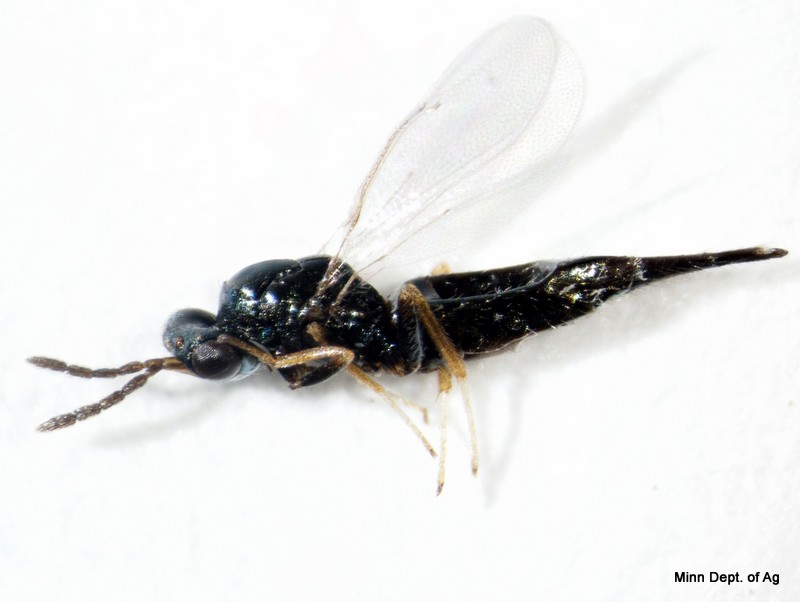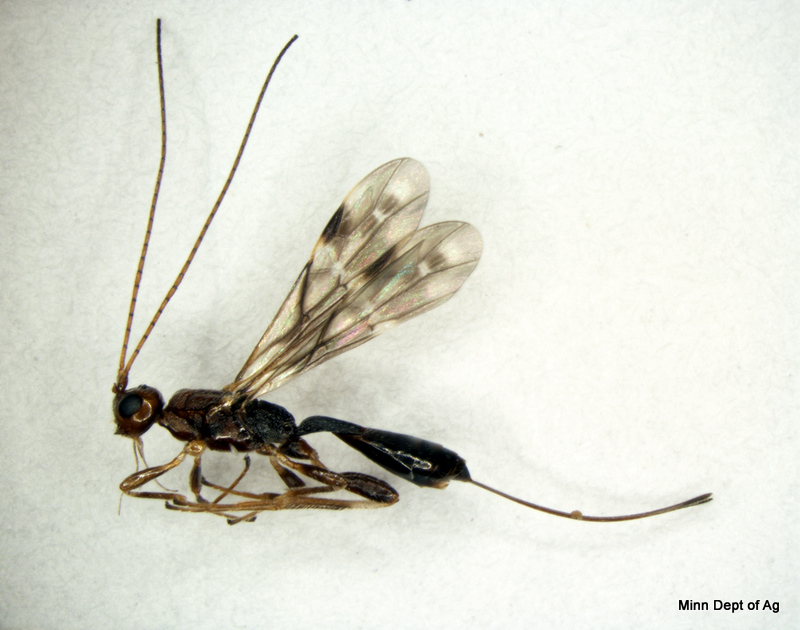Return to EAB biocontrol main menu
The Minnesota Department of Agriculture (MDA) releases three types of small, non-stinging parasitoid wasps to help reduce emerald ash borer (EAB) populations in Minnesota. The parasitoid wasps are produced at a specialized rearing facility in Brighton, MI ran by the U.S. Department of Agriculture's Animal Plant Health Inspection Service (USDA APHIS).
Oobius agrili (egg parasitoid)

Oobius agrili Zhang and Huang (Hymenoptera: Encyrtidae) wasps are so tiny that they are difficult to see (0.95 mm long). Adult females search ash bark crevices to find EAB eggs. A female will insert one of her eggs into an EAB egg. The wasps develop in the EAB eggs then emerge as an adult. There are at least two generations per year resulting in parasitism rates up to 60%. Oobius agrili overwinters as mature larvae in EAB eggs then adults emerge the following spring and summer. Each O. agrili female can parasitize up to 62 EAB eggs and can reproduce without males (parthenogenesis).
This detailed presentation shows how to look for Oobius agrili (PDF).
Tetrastichus planipennisi (larval parasitoid)

Tetrastichus planipennisi Yang (Hymenoptera: Eulophidae) are small parasitoids (1.6 to 4.1 mm long). Adult females locate EAB larvae under ash bark and insert eggs into EAB larva. Parasitized EAB larva remain active for approximately one week although the parasitoids develop within and eventually consume the EAB larvae. Tetrastichus planipennisi larvae pupate inside the EAB gallery and emerge approximately 15 days after pupation by chewing an exit hole through the bark. They overwinter as larvae within the host or host gallery. Approximately 4-172 progeny are produced per EAB larva. In China, T. planipennisi completes four or more generations per year and parasitism levels range from 0-65%.
Spathius galinae (larval parasitoid)

Spathius galinae Belokobylskij and Strazanac (Hymenoptera: Braconidae) are small parasitoids. Adult females locate EAB larvae under ash bark, paralyze and lay eggs on the outside of the EAB larva. Parasitoid larvae develop and consume the EAB larva. S. galinae larvae pupate inside the EAB gallery and emerge approximately one month later by chewing an exit hole through the bark. They overwinter as larvae within the host gallery. Approximately 5-12 individuals are produced per EAB larva. In the Russian Far East, S. galinae completes two generations per year with parasitism rates averaging 63%.

